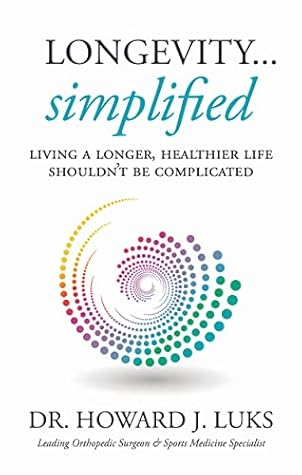Kindle Notes & Highlights
The carbohydrates we need to limit are simple, highly-processed carbohydrates such as white bread, white rice, sugar, pasta, bagels, cookies, etc. In moderation, most of us, assuming our total caloric intake is kept under control, can eat complex carbohydrates such as natural whole grains, beans, legumes, and nuts will not cause a significantly elevated triglyceride level. Taking in complex carbohydrates leads to less rapid absorption of glucose into our bloodstream after we eat. It’s the fiber that comes along with the complex carbs and berries that matters in this context.
Triglyceride levels, as well as your LDL or ApoB levels, are considered a strong marker for cardiac disease specifically, and poor metabolic health in general.
An oral glucose tolerance test (OGTT) can also tell you if you may have signs of pre-type 2 diabetes.
Aside from C-reactive protein (CRP), triglycerides, HDL, and an oral glucose tolerance test (OGTT), there are other biomarkers you can look at to understand your risk of developing dementia.
Overall, this means we want to keep our homocysteine levels low by ensuring we get enough B vitamins.
You should know your uric acid level, and it should be in the low-normal range, not the high-normal range (Desideri et al. 2014).
Creatine supplementation has been proven to be a safe and effective way of minimizing age-related muscle loss (Morton et al. 2015) and cognitive decline (Rawson and Venezia 2011).
Also, if possible, avoid certain medications such as BenadrylⓇ and benzos (benzodiazepines).
Alzheimer’s Universe website
Again, sleep, a healthy diet, and exercise are the only proven ways to decrease brain beta-amyloid, improve metabolic health and adjust your risk of developing Alzheimer’s disease and other contributors to a poor healthspan (Ebrahimi et al. 2017).
Create a caloric deficit, then stay lean. Get sleep. Eat real food. Move often, throughout the day. Push and pull heavy things. Socialize. Have a sense of purpose.
Heart disease risk depends on your genetics, your Lp(a) level, your LDL level (ApoB level), and how much inflammation is present in your body.
Each LDL particle is carried around in the blood by one particle of ApoB (Apolipoprotein B). Since LDL particles can be large, small, or even tiny remnants, it appears that your ApoB levels may be the more important determinant of your overall risk of atherosclerotic heart disease.
Sitting for hours on end can negate the benefits of a 30-minute run earlier in the day.
There is a 39% decrease in mortality in people who perform 1 hour of moderate-intensity exercise each day. That seems to be the maximum gain we can achieve with exercise alone.
Consider obtaining a home blood pressure monitor and check your blood pressure a few times each week.
The mechanics of walking shows that your knee is subjected to 5-7 times your body weight with each step. So, if you weigh 300 pounds, each step puts nearly 2,100 pounds of force across each knee.
Consume less sugar. Favor unsaturated fats vs. saturated fats. Eat more plants. Avoid ultra-processed carbohydrates (think cereal, instant oatmeal, white rice). Include more fiber from vegetables and fruits into your body.
If you exercise heavily, you will need up to 1.5-2 grams of protein per kilogram of body weight.
You will see a drop in your daily heart rate variability reading if you are getting sick, if you are not sleeping well, or if a heart problem is acting up.
HRV4Training
Creatine is a supplement suggested for most adults because it keeps our muscles larger and promotes bone health.


